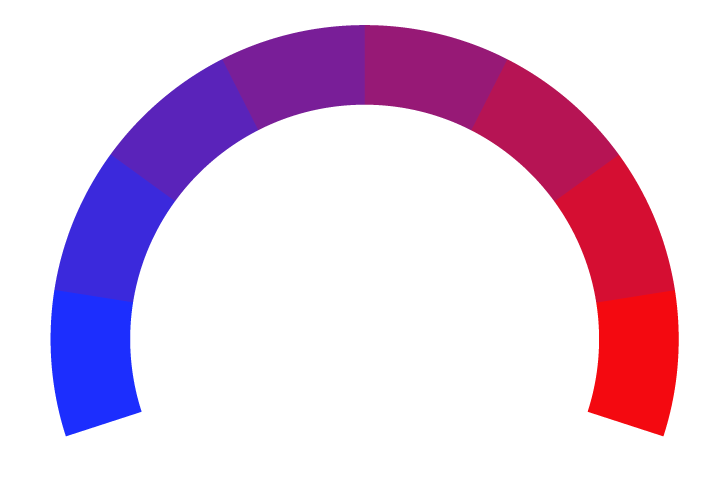Abortion helped Democrats across the U.S. hold off a "red wave." Not in Texas.
- Bias Rating
-12% Somewhat Liberal
- Reliability
N/AN/A
- Policy Leaning
96% Very Conservative
- Politician Portrayal
-12% Negative
Continue For Free
Create your free account to see the in-depth bias analytics and more.
Continue
Continue
By creating an account, you agree to our Terms and Privacy Policy, and subscribe to email updates. Already a member: Log inBias Score Analysis
The A.I. bias rating includes policy and politician portrayal leanings based on the author’s tone found in the article using machine learning. Bias scores are on a scale of -100% to 100% with higher negative scores being more liberal and higher positive scores being more conservative, and 0% being neutral.
Sentiments
N/A
- Liberal
- Conservative
| Sentence | Sentiment | Bias |
|---|---|---|
Unlock this feature by upgrading to the Pro plan. | ||
Reliability Score Analysis
Policy Leaning Analysis
Politician Portrayal Analysis
Bias Meter
Extremely
Liberal
Very
Liberal
Moderately
Liberal
Somewhat Liberal
Center
Somewhat Conservative
Moderately
Conservative
Very
Conservative
Extremely
Conservative
-100%
Liberal
100%
Conservative

Contributing sentiments towards policy:
60% : Disclosure: Planned Parenthood and Texas Christian University have been financial supporters of The Texas Tribune, a nonprofit, nonpartisan news organization that is funded in part by donations from members, foundations and corporate sponsors.55% : Even after their long-awaited victory at the highest level of the American justice system in June, anti-abortion organizers are still mobilizing voters at the grassroots level.
54% : Already, the scope of conversation around abortion in the upcoming legislative session is beginning to take shape.
52% : Democratic gubernatorial candidate Beto O'Rourke framed abortion as "the most important thing" about the election, pinning the state's near-total ban on his opponent, Gov. Greg Abbott in TV ads, fundraising emails and stump speeches.
48% : While Texas was unlikely to have a similar referendum anytime soon, Democratic candidates made abortion a key part of their messaging.
48% : "If abortion is on the ballot, abortion wins," Tigner said.
47% : Voters in California and Vermont also added constitutional protections for abortion.
45% : Down-ballot, more legislative candidates spoke more frankly and more often about abortion than ever before.
44% : Abortion on the ballot While towns in Texas voted to oppose abortion access, it was an entirely different night for states considering a similar question.
44% : "People across this country believe that abortion should be legal."
42% : Nationally, abortion helped Democrats hold off the threatened "red wave," and in states where reproductive rights were on the ballot, voters turned out and even crossed party lines to support increased access.
42% : But then, in late June, a meteor hit the electoral landscape: The U.S. Supreme Court overturned Roe v. Wade, freeing states to ban abortion for the first time in 50 years.
40% : None of these three cities had abortion clincis, and the procedure is virtually outlawed in Texas.
39% : Nor have they forgotten about the issue -- abortion is second only to inflation, with the majority of voters saying they felt dissatisfied or angry about the overturn of Roe v. Wade, according to an NBC exit poll.
39% : In the four months between the Supreme Court decision and the election, other issues began to push abortion out of the headlines -- the faltering economy, swelling inflation, rising crime numbers.
39% : Preliminary analysis indicates at least some Republicans voted to ensure the state constitution would not include a prohibition on abortion.
37% : With this election likely representing the high-water mark for attention on abortion, it'll be up to abortion advocates to keep voters -- and the Democratic party -- engaged and enraged around this issue.
35% : After decades playing defense on abortion, Democrats saw this as their chance to go on the offensive, attacking Republicans for ending abortion access for millions of Americans.
*Our bias meter rating uses data science including sentiment analysis, machine learning and our proprietary algorithm for determining biases in news articles. Bias scores are on a scale of -100% to 100% with higher negative scores being more liberal and higher positive scores being more conservative, and 0% being neutral. The rating is an independent analysis and is not affiliated nor sponsored by the news source or any other organization.






















 KPRC
KPRC